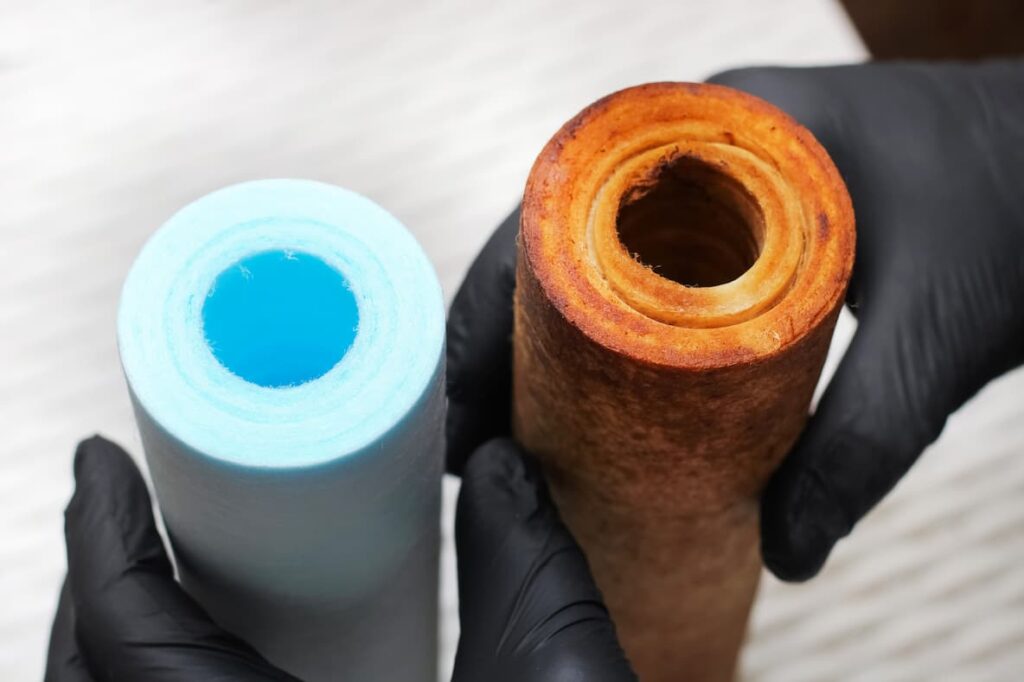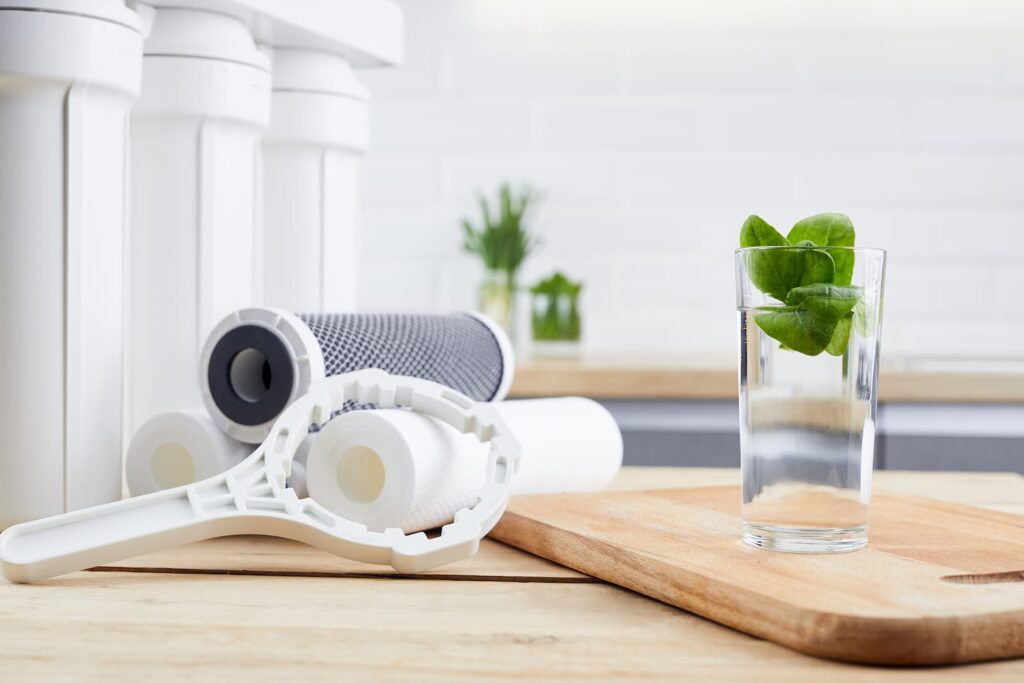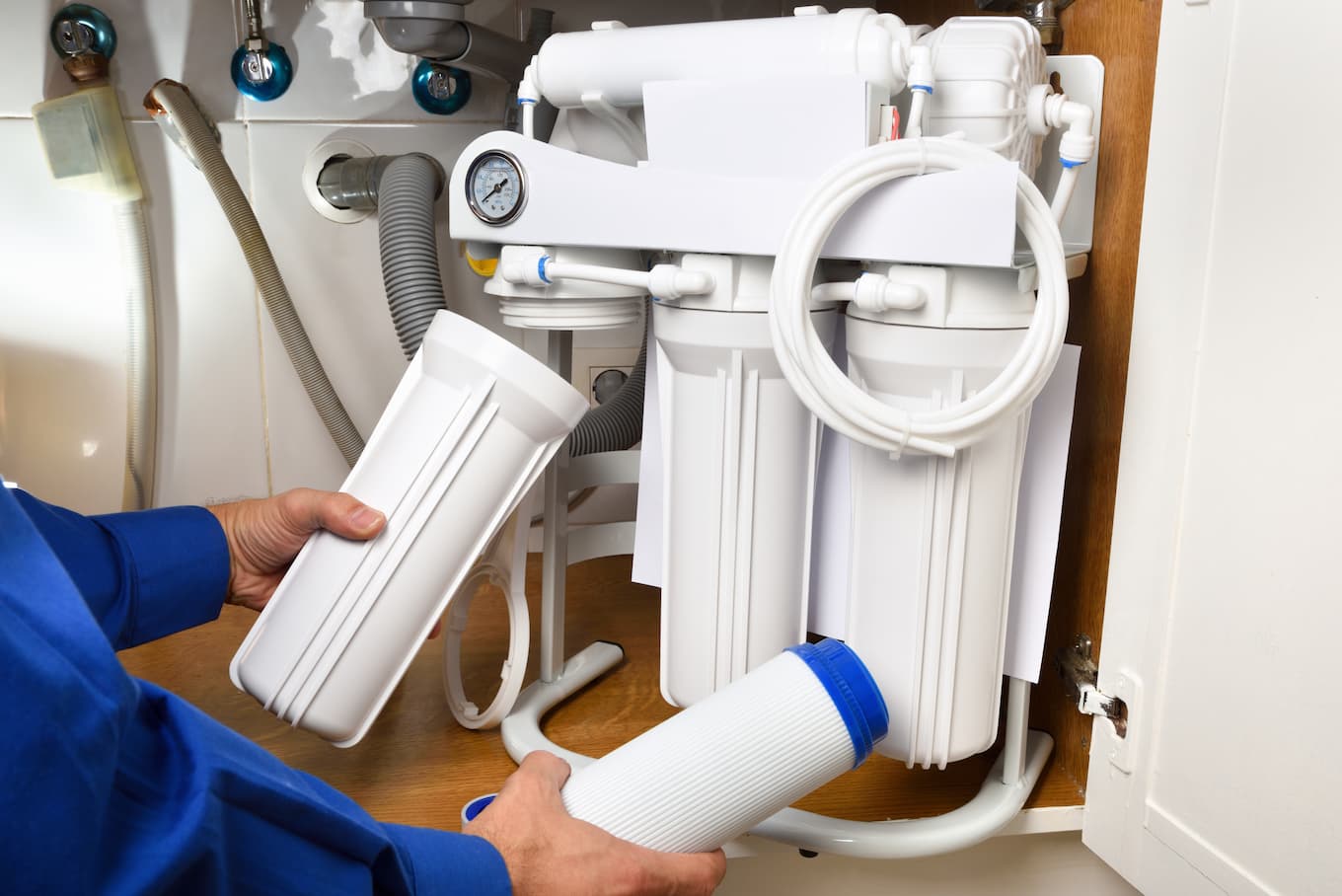Reverse osmosis systems work best when periodically cleaned or, better yet, sanitized. It eliminates scaling and fouling for the best possible water quality and flow. Additionally, you are shielded from germs that could be dangerous.
How should an RO system be sanitized? It might sound hard, but don’t worry; you can complete this task without seeking professional assistance. However, you should remember that it’s always a good idea to ask for help from the experts on the topic if you are unsure how to do it. Read our guide below to learn everything you need to know.
Steps to Clean a RO System

Here are some pro tips before you start:
- Make sure to sanitize your system before installing new filters, and keep them in their original packaging until the replacement stage.
- Remove any extra dust or dirt from the service area before beginning.
- For optimal hygiene, it’s best to scrub your hands with soap and water or cover them in sanitary gloves.
Steps to Clean your Reverse Osmosis Systems:
- Start by switching the cold water supply off and unplugging the unit from a power source.
- To ensure optimum system performance, shut off the water supply line to your refrigerator or icemaker.
- Turn on the faucet to relieve pressure within the system and shut it off again once the flow stops.
- Remove your storage tank’s lid and use a sponge or cloth to remove any sediments.
- After that, unscrew the tubing connections and flush them out with a diluted bleach solution (one tablespoon for every five gallons of water).
- Now, it’s time to sanitize your filters. Start by taking them out of the filter housing and soaking each in a bowl of the same bleach (NSF-approved) solution for 15 minutes. Rinse them out with fresh water before replacing them in the filter housing.
- Now, use an appropriate cleaner to clean the housing components from sediment buildup before re-installing them.
- Next, clean the membrane using deionized water or vinegar-based solution, passing it through the system.
- Ensure that all black rubber O-rings are properly in place, and securely fasten the empty housings back on.
- The only filter that should be present at this stage is the post-filter.
- Once done, carefully reassemble all the components, turn the supply back on before allowing water to flush through for at least five minutes, and then close it back.
- Check for leaks.
- Close the faucet to let the tank fill.
- For optimal performance, it is recommended to discard up to two tanks of water before use; however, this may not be necessary depending on the system you are using – please refer to your manufacturer’s instructions.
- Run a few gallons of water through your faucet until it tastes fresh.
- Finally, you can reconnect your ice maker or refrigerator.
Cleaning the Membrane
Depending on the kind and as the manufacturer advises, you may need to soak a RO membrane in various chemical solutions to clean it. Just be sure to follow the directions about safe handling and disposal.
You can avoid scaling and fouling by removing organic debris, calcium precipitates, mold, mildew, and other unpleasant substances. Follow these cleaning instructions below:
- Put on your gloves and safety glasses first.
- In non-reactive plastic buckets, prepare the cleaning agents.
- Depressurize the system and close the tank valve and water supply valve.
- Remove the RO membrane’s casing.
- Spend the specified amount of time soaking the membrane in each chemical solution. Rinse well with water after every bath.
- Assemble the system once more.
- Before using the water, let the complete system run for 20 to 30 minutes.
How Often Should the Reverse Osmosis System Be Sanitized?
It is strongly recommended that you thoroughly sanitize your Reverse Osmosis system once a year. This will ensure the best possible water filtration and maximum performance of the unit. It’s also wise to perform this task when replacing your reverse osmosis filters, which typically need changing every 12 months.
Benefits of Cleaning an RO Water Filter System

Cleaning your RO water filter system improves its performance and helps you get the purest drinking water possible. It removes bacteria, sediment, and other contaminants that could harm human health. Additionally, regular sanitization can extend the life of your reverse osmosis system by preventing scaling and fouling. Proper maintenance will also reduce the chances of unexpected breakdowns, which can be costly to repair.
Furthermore, it helps to improve water by removing any unpleasant odors or tastes. Finally, cleaning your system regularly can save you money on utility bills as a well-maintained system runs more efficiently than a neglected one.
Quality RO Systems For Yachts and Boats
Reverse osmosis systems are a great way to provide your family with clean, safe drinking water. Cleaning this system regularly is essential for optimal performance and long-term use. Following the steps outlined above, you can ensure that your reverse osmosis system remains in top shape for years.
Cruise RO Water and Power offers reliable sales and technical support seven days a week. Our friendly staff can answer all your questions about reverse osmosis systems and advise on the best ways to maintain them for maximum performance. Contact us today to learn more!




